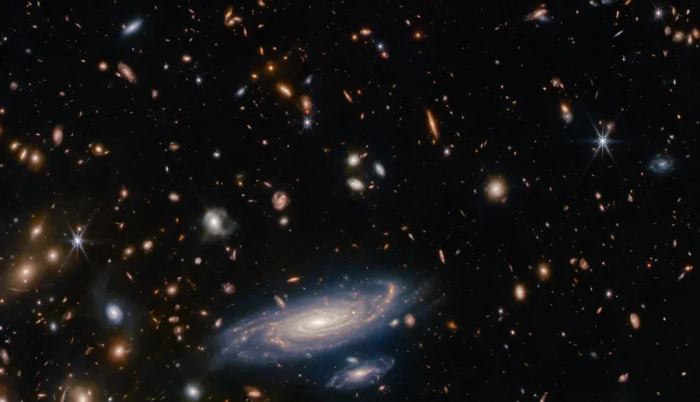![]() Home > Space & Science
Home > Space & Science
James Webb Telescope Captures A Milky Way-Like Galaxy A Billion Light-Years Away

European Space Agency
![]() February 15th, 2023 | 11:04 AM |
February 15th, 2023 | 11:04 AM | ![]() 262 views
262 views
European Space Agency
The image reveals a grandiose spiral star system akin to our own.
Astronomers at the European Space Agency (ESA) used the James Webb Space Telescope to capture an image of a spiral galaxy that resembles our home, the Milky Way. The star system, LEDA 2046648, sits a billion light-years away from ours in the constellation Hercules; it contains thousands of galaxies, trillions of stars and countless planets.
The ESA released the picture on January 31 (highlighted this week by The NY Times). The space agency described it as a mere calibration image to “verify the telescope’s capabilities as it was prepared for science operations.” ESA astronomers snapped it on May 22, 2022, with the Webb telescope’s Near InfraRed Camera (NIRCam).
That ultra-powerful camera can detect longer infrared wavelengths produced by light from this far away. Redshifting describes the stretching of light’s wavelength as it moves away from us, increasing until it appears redder than expected. It occurs because of the universe’s expansion: Distant systems like LEDA 2046648 keep moving farther from Earth.
Most of the visible blobs surrounding LEDA 2046648 are also galaxies, although several stars can be discerned by their diffraction spike patterns. Some objects in the image could be as old as 300 million years after the Big Bang. Of course, an image of anything one billion light-years away means we’re viewing the galaxy’s light from a billion years ago. So astronomers are eager to study early galaxies like this one (and even older ones) to help clarify the types of stars that condensed out of the Big Bang — and how supermassive black holes ended up in most galaxies’ centers.
Source:
courtesy of ENGADGET
by Will Shanklin
If you have any stories or news that you would like to share with the global online community, please feel free to share it with us by contacting us directly at [email protected]